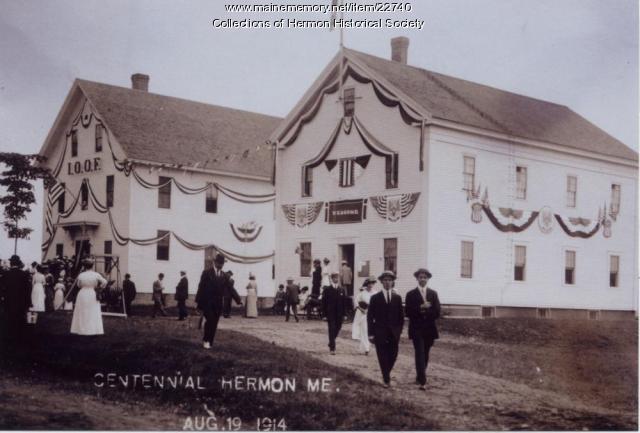Keywords: Theater Architecture
Item 29408
Riverton Park Theater, Portland, ca. 1898
Contributed by: Maine Historical Society Date: circa 1898 Location: Portland Media: Photographic print
Item 27954
Dreamland Theater, Front Street, Bath, ca. 1910
Contributed by: Patten Free Library Date: circa 1910 Location: Bath Media: Photographic print
Item 150996
Actor's bungalow for Lakewood Inc., ca. 1935
Contributed by: Maine Historical Society Date: circa 1935 Location: Madison Client: Lakewood Inc. Architect: John P. Thomas
Item 150545
Theatre at Fort Fairfield, Fort Fairfield, 1913
Contributed by: Maine Historical Society Date: 1913 Location: Fort Fairfield Client: unknown Architect: Harry S. Coombs
Exhibit
Selections from the Collections
Maine Historical Society staff come across unique and unforgettable items in our collections every day. While it's difficult to choose favorites from a dynamic collection, this exhibit features memorable highlights as selected by members of the MHS staff.
Exhibit
Dressing Up, Standing Out, Fitting In
Adorning oneself to look one's "best" has varied over time, gender, economic class, and by event. Adornments suggest one's sense of identity and one's intent to stand out or fit in.
Site Page
Architecture & Landscape database - Maine Architectural Renderings
"Maine Architectural Renderings By Earle G. Shettleworth, Jr. Bramhall by Charles A. AlexanderMaine Historical Society With the emergence of…"
Site Page
Architecture & Landscape database - Gridley Barrows
"… the University of Maine in Orono, the Schaeffer Theater at Bates College in Lewiston, and the John and Sylvia Lund Residence in Augusta."
Story
Annette Addorio: 100+ years of memories from full life
by Biddeford Cultural & Heritage Center
From 1914 to 2018, highlights from my life in Biddeford
Story
Spiros Droggitis: From Biddeford to Washington DC and back
by Biddeford Cultural & Heritage Center
A Greek family's impact: from the iconic Wonderbar Restaurant to Washington DC
Lesson Plan
Building Community/Community Buildings
Grade Level: 6-8
Content Area: Social Studies
Where do people gather? What defines a community? What buildings allow people to congregate to celebrate, learn, debate, vote, and take part in all manner of community activities? Students will evaluate images and primary documents from throughout Maine’s history, and look at some of Maine’s earliest gathering spaces and organizations, and how many communities established themselves around certain types of buildings. Students will make connections between the community buildings of the past and the ways we express identity and create communities today.
















